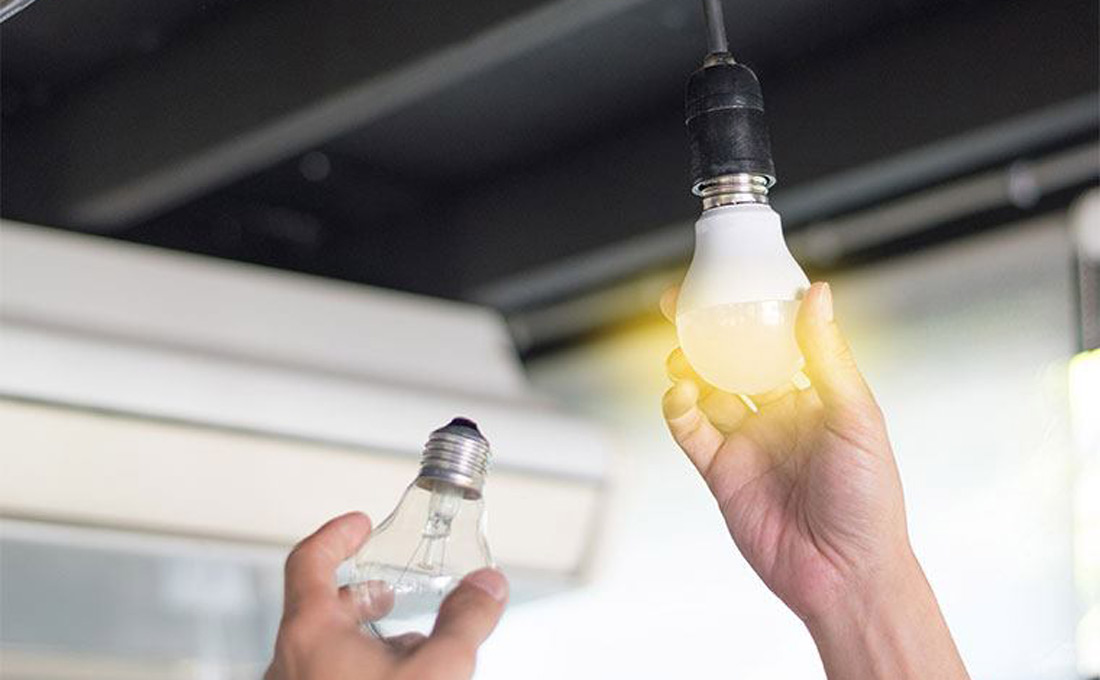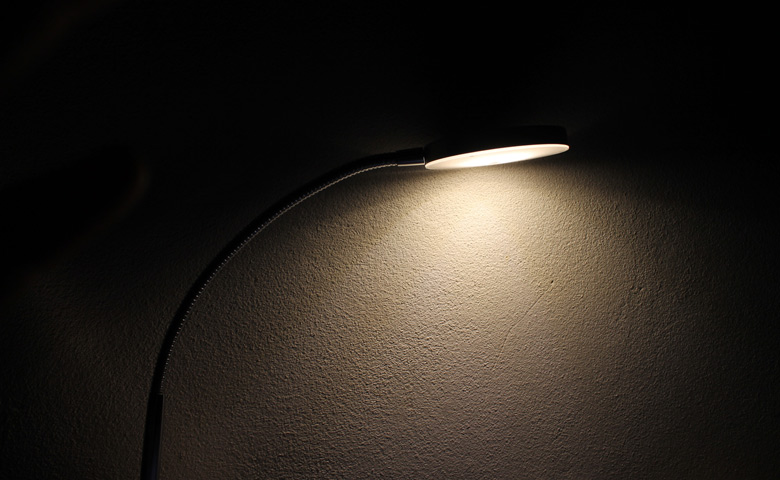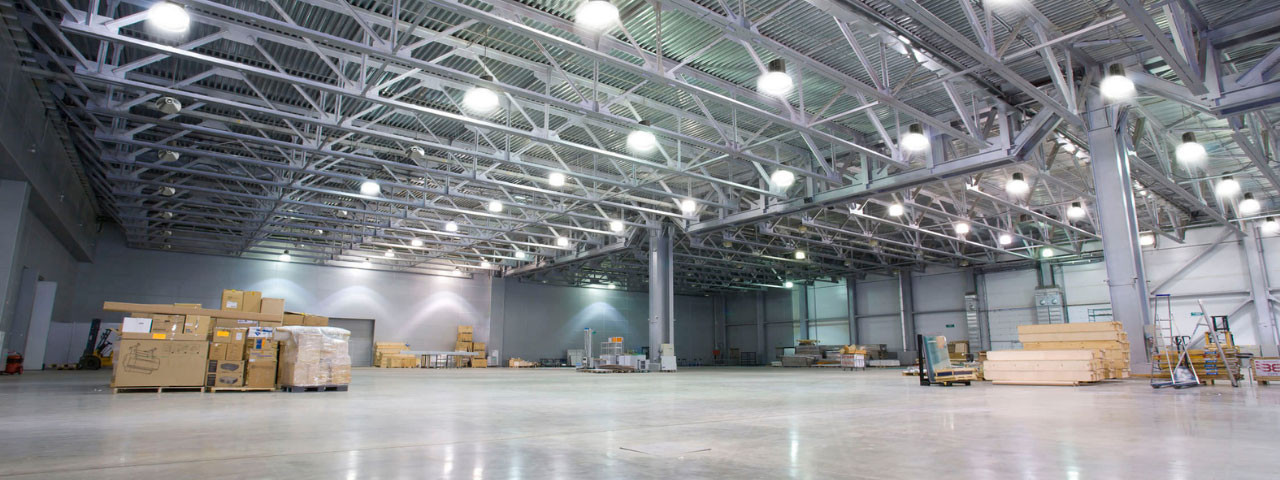4 Benefits of LED High Bay Lights for Warehouses
During your time as a contractor or technician, you’ve probably heard the old industry saying, “if it isn’t broken, don’t fix it.” But, when talking about upgrading to LED high bay lights, there are many good reasons to make that change anyway.
In comparison to the more traditional incandescent, halogen, or fluorescent lighting, LED lights are safer, more versatile, last longer, and save money on energy costs.
All these benefits stem from the fact that LED lighting technology is highly energy efficient. LEDs deliver more light with less wastage, while using only a fraction of the energy needs of older technology. From a technical point of view:
- LEDs give off more light per watt, thus giving a higher lumen count and light density.
- LED technology wastes very little energy through invisible light or heat. LEDs are also directional, so the light can be focused where needed.
- LEDs produce high quality light. The color temperature can be varied throughout the spectrum to suit your needs, and can even be dimmed to conserve energy.
- LED technology requires little maintenance and has a longer lifetime.
Despite such big advantages, the considerable initial cost of LED high bay lights still hinders their adoption either as new installations or for retrofitting old lights.
Here, we will discuss how the benefits of LED high bay lights translate to business gains for you as a general or electrical contractor and for your clients.
Benefit 1 - Lifetime Energy Savings Beat High Initial Cost
LED lighting technology is the most energy efficient method of illumination today. LEDs use up to 90% less energy, slashing energy bills by this dramatic amount, and giving facility managers immediate cost savings.

Light-emitting diodes (LEDs) do this by emitting light directly without needing to heat up. Incandescent lights lose up to 95% of their energy intake as heat, while fluorescents lose only 25–40%.
Your clients will initially be apprehensive at the high initial cost of purchasing LED lighting fixtures. In many cases, LED high-bay lights can be 2 or even 3 times the price of high-intensity discharge (HID) lights with the same lighting parameters.
Informing the clients of the lifetime value of LED high bay lights compared to HIDs should help change their minds. The cost savings in industrial and commercial facilities can be immense over several years.
For one, LED lights usually last for 100,000 hours or more—amounting to 11 years of continuous lighting. Compare that to 25,000 hours for the best HIDs, and you can see why your clients get more out of their investment.
Secondly, LED high bay lights require minimal maintenance over their lifetime. Unlike HIDs which might require replacing tubes, ballasts, and other components, LEDs offer a fit-and-forget advantage.
This may mean fewer maintenance and service calls for contractors, but the safety, cost, and usability tradeoffs are worth it. Your clients won’t have to spend more money or have to stop operations for scheduled maintenance calls. There are plenty of positive aspects to outweigh any objections.
Above all, LEDs are one of the best ways that businesses can move towards going green. By using much less energy and staying away from non-polluting products such as mercury, both you as a contractor and your clients will do your part for our planet.
For these reasons, McKinsey added LED lighting to its list of top nine innovations for sustainability in the future:
“In 2030 alone, LED lights will reduce energy consumption by 40 percent, which adds up to $26 billion in savings adjusted to today’s energy prices … according to the Department of Energy, the U.S. can still see an additional 20 percent in energy savings with increased investment in LED lights.” -McKinsey
Expert Tip: Talk to your clients about how the energy savings from LED costs helps them recoup the initial investment within a few years. We can help you use an energy calculator to put a dollar value on those savings to convince potential clients to use LED high bay lights.
Benefit 2 - Superior Performance and Versatility
Not many of your clients are thinking about the performance of their high bay lights, even though a lot rides on it including productivity and safety.
LED lights allow for more control during installation and use. Let’s explore these benefits in the table below and how they compare to other HID lights.
| Feature | LED Lights | Other Types of High Bay Lights |
| Directional lighting | LED fixtures produce light directionally over 1800; they have no wasted light and don't require reflectors | Fluorescent tubes are omnidirectional, resulting in wasted light; they require reflectors to focus the light |
| Light color | LEDs can be designed to generate the entire spectrum of light; you don’t need additional color filters | HIDs produce a warmer light, but they “fade” to blue or violet light over time; you need filters to regulate this and reduce eye strain |
| Uniform lighting | LEDs generate and distribute light evenly over a surface; there is less variation in brightness and light color from place to place | directly beneath the light and fade as you move away; non-uniform illumination can induce eye fatigue and reduce visibility |
| Dimming | LEDs are easy to dim to meet varying lighting needs | It is difficult to dim HIDs and fluorescents; this may not be feasible in some special industrial and commercial applications |
These performance features will catch the eye of any client who values the advantages of a modern work environment. From reduced safety concern caused by shadows and glare to increased productivity, LED high bay lights have features that extend far beyond any alternative.

The vastly superior performance of LED high bay lights allows workplaces and other facilities to be modernized in keeping with current standards. LED technology even allows for automation and seamless integration with natural lighting for a more comfortable feel.
The result: better contrast ensures higher levels of accuracy, such as in identifying parts or fulfilling orders more accurately.
Benefit 3 - Increased Fire Safety and Health Standards
High bay LED lights are lighter and operate at cooler temperatures than HIDs, reducing fire hazards.
Unlike incandescent and fluorescent bulbs which have to heat a filament red-hot to operate, LED lights stay relatively cool even after a long time of continuous use. For this reason they can be used in closed spaces and even in environments with flammable substances.
Relatively, LED lights also present a fire risk in case of electrical malfunction. The solution is to always use high-quality, authentic products and make sure that they are installed as required.
Meanwhile, HID bulbs and incandescents can get extremely hot to the touch. They can ignite flammable material just by being near them. Electrical ballasts can also get very hot and constitute a fire hazard unless protective measures are added.
Fluorescents and metal halide lamps are especially dangerous because, when they wear out, they can release toxic fumes of mercury, lead, or metal halides. Their ballasts can also flare up with high voltages, constituting a serious health and safety risk.
In special applications such as industrial or hospital settings, traditional high bay lights constitute an even greater risk. From human error due to poor lighting to potential exposure to chemicals, the video below explains how LEDs are a safer alternative.
All these reasons are why LED fixtures and luminaires can serve better as high bay lights. With faster installation and minimal maintenance, your clients can also save on space, money, and time.
Expert Tip: Advise clients to always replace HID and fluorescent hardware at 60–75% of their rated lifetime. As these fixtures get older, the ballast has to produce higher voltage to produce the same intensity of light, which increases the risk of failure and fire hazard.

Benefit 4 - Easy Installation to Suit Client Needs
Whether you’re doing a new installation or retrofitting existing high bay lights, LED fixtures are far easier to install than other options.

LED lights offer a wide variety of mounting options including hanging by a chain or cable, gripper wires, and flood brackets. They enable you to recommend low-cost options to suit any client needs.
- The client can keep existing fixtures and housings and replace only the bulbs with LEDs
- If the client wants full benefits including dimmability, they will need to swap out some of the existing hardware including switches
- LED luminaires can be installed as stand-alone lights or as replacements without having to remove existing fixtures
- For new installation projects, clients have the full gamut from which to choose
With LED high bay lights, there is no need to install special reflective housings, ballasts, and all that peripheral hardware.

Talk to Us About Value-Engineered Quotes
With these and many other benefits of using LED high bay lights, there is every reason for all electrical and general contractors to recommend them to their clients.
But we know that LED high bays can be expensive. At RelightDepot, we are committed to helping you find the best pricing. Thanks to our:
- Extensive catalog of commercial and industrial LED fixtures for all applications
- Extensive knowledge of lighting and the construction industry
- A commitment to personalized and value-added service, you can expect the best deals to help both you and your clients meet your budget and time constraints
If you need financing for your project, consider our extended payment terms for extended purchases.
Whatever your needs, talk to us about your project and we will help to value-engineer your quotes with acceptable, more affordable alternatives. Give us a call at 888-548-6387 and we will be more than happy to walk you through the process and answer any questions you might have.
March 4, 2022 by Ray De Varona.

